Eurofighter Typhoon FGR4 aka EF2000
Typhoon - a unique combat aircraft, produced in four versions: one option for each country within the consortium (Britain, Germany, Italy and Spain). At the same time, all the contracting companies are engaged in the production of units for each of the 620 aircraft.
The members of the consortium are engaged in the production of the following elements of a multi-purpose fighter:
AleniaAeronautica - rear fuselage section, external flaperones, left wing;
BAE Systems - the rear section of the fuselage, the front part of the fuselage (including PGO), gargrot, flashlight, tail stabilizer, internal flaperons;
EADS Deutschland - center section, the central part of the fuselage;
EADS CASA - slats, right wing.
Design features of EF2000 reflect the desire of designers to use the latest advances in the field of electronics and aircraft. To ensure the required level of maneuvering characteristics, especially at high angles of attack, the fighter was designed according to a scheme with a low-lying triangular wing (the sweep was 53 degrees), a negative margin of stability, two-section slats and flaps, a rotary front horizontal tail, vertical keel and rudder without a stabilizer. This scheme has several advantages, the main of which is the reduction of resistance at supersonic speeds.
The front edge of the front horizontal tail is made of radio absorbing material.
Although the new fighter does not belong to the category of aircrafts made using the stealth technology, during its design several structural-layout measures were taken which were aimed at reducing the effective scattering surface. During the design, the task was to reduce the effective scattering surface from the front views of the radar systems by four times compared with the similar value of the Tornado aircraft.
Such measures include: recessed air intakes and engine input masks masked by the input devices (a significant source of electromagnetic radiation reflection). Some structural elements of the aircraft, which are important in reflectivity (the bearing planes and the leading edges of the horizontal tail and stabilizer) have a large scale, which is why they have good reflectivity in the leading sector. External suspensions of guided missiles are semi-submerged, which makes it possible to partially shield the structure of the aircraft from the incident EM radiation of the suspension of the missiles.
The reflectivity-leading structural elements and sections of the Eurofighter fighter are covered with radio absorbing materials, mainly developed by the EADS / DASA concern. Among them: the leading edge of the wing, the inner surfaces and the entrance edges of the air intakes, the rudder, as well as the adjacent surfaces and the like.
In the design of the aircraft, various carbon plastic materials are used to make 40 percent of the mass of the airframe, aluminum-lithium alloys (Al-Li 8090) - 20%, aluminum alloys - 18%, titanium alloys - 12% and fiberglass - 10%. Carbon plastics account for 70 percent of the airframe surface, 12% - fiberglass make up, 15% - metal, 3% - other structural materials. The contract stipulates that the weight of an empty aircraft should not exceed 9999 kg. In the future, it is possible to use advanced aluminum-lithium alloys. The design life of the structure is 6 thousand hours.
Fuselage-type semi-monocoque. Pilot from small-arms fire weapons Medium caliber partially protects invoice cockpit armor. Frameless one-piece protruding lantern gives a good overview.
On the fighter, single tail finning is used which has a large area with a rudder. The root of the keel is equipped with an air intake of the heat exchanger of the cooling system.
Wing mechanization - flaperon section and hanging elevons, as well as deflecting socks section on each console. The wing skin is made of carbon fiber (deflectable socks and containers at the ends of the wing, made of aluminum-lithium alloys).
The area of the front horizontal tail - 2,40 m2. For its manufacture mainly used carbon fiber.
The tricycle landing gear of the aircraft has one-wheel struts. The main pillars are retracted in the direction of the fuselage, the front pillar is forward. The design of the tires and chassis is optimized for action even with coarsely repaired concrete runways, as well as for landing without leveling. But in order to eliminate problems with the heating of the wheel disks during intensive braking, the required length of the lanes, which was, according to the original plans, 500 meters, was increased to 700 meters. For emergency braking the aircraft is equipped with a braking parachute.
The engine development program (EFA-Programm) was launched in the 1983 year. Based on the engine used RB 199 used on a multi-purpose aircraft "Tornado". According to other sources, the engine was created on the basis of an experimental Rolls-Royce XG.40. his bench tests were conducted in the 1988 year.
In 1986, the EurojetTurboGmbH consortium was founded to develop, design, and then produce the EJ200 engines. Founders of the consortium: Rolls-Royce (UK), ITP (Spain), FiatAvio (Italy) and MTU AeroEngines (Germany). EurojetTurboGmbH was located in the town of Hallbergmoos, a suburb of Munich, and is bound by treaties with the agency NETMA (NATO), which in turn is a partner of all the listed countries.
EJ200 is a two-circuit twin-shaft turbofan engine with an afterburner. The design of the engine uses single-crystal turbine blades, disks made of powder materials, an all-digital digital control system, brush seals, and an integrated diagnostic system. Composite materials are widely used for stationary engine parts. The combustion chamber of the engine has a thermally insulating coating made of ceramic material.
The fighter uses an unregulated ventral air intake with rectangular lateral edges and a curvilinear lower edge divided into two channels by a vertical partition (supplying air to each turbofans), having a deflectable lower and fixed upper panel.
According to the intergovernmental agreement of the states, Germany, Great Britain, Spain and Italy pledged to participate in the joint development and manufacture of the engine for the Eurofighter Typhoon fighter. The engine is modular. On average, it takes 45 minutes to dismantle it.
Engine Specifications:
Traction dry - 6120 kgf;
Traction on afterburner - 9097 kgf;
Fuel consumption in open-running mode from 0,745 to 0,813 kg / kgf per hour;
Afterburner fuel consumption from 1,65 to 1,72 kg / kgf per hour;
Before the turbine, the gas temperature is 1840 ° K;
Air consumption - 76 kg / s;
Input diameter - 740 mm;
Length - 4 m;
Weight - 989 kg;
The assigned resource is 6 thousand hours;
The overhaul life is 1 thousand hours.
The fuel is located in the fuselage, keel and wing in the protected tanks. On the central and a pair of underwing nodes of the external suspension are suspended fuel tanks, with a capacity of 1500 l and 1000 l, respectively. Also in the fighter provides a system for refueling in flight.
Electro-distance flight control system is quadruplex adaptive, it has no reserve mechanical wiring. Provides artificial stability of the aircraft and safe piloting on the ultimate mode and high maneuverability.
The armament control system includes an infrared front view system PIRATE and a multi-mode coherent pulse Doppler radar ECR90.
EF2000 is equipped with an inertial navigation system with laser ring gyroscopes, a helmet-sight-indicator, equipment for identifying and determining the priority of the enemy's means of attack, calculators of defensive and offensive maneuvers and the area of possible use of weapons.
The DASS defense system is the most expensive part of the electronic equipment created for the European destroyer. The system provides assessment and synthesis of data received from the receivers of laser and radar radiation, other sensors, and automatic activation of the necessary active (towed decoys, transmitters of interference) and passive means of protection. Containers with equipment are located at the ends of the wing consoles.
The fighter "EF2000" has no internal weapons bays. Instead, there are external suspension assemblies that degrade the performance of the EPR, however, allow you to expand the options and range of weapons used.
On the fighter thirteen knots external suspension. Typical weapons are 4 medium-range guided missiles AIM-120 AMRAAM, Skyflash (on British aircraft) or Aspid (on Italian aircraft) deployed in a semi-submerged position under the fuselage, and 2 short-range guided ASRAAM or AIM-9 Sidewinder located on the extreme wing nodes. The total number of air-to-air missiles to 10 units, however, the take-off mass of the fighter, even with such armament, should not exceed 18140 kg (40 kips). Suspended fuel tanks can be placed on 3 external suspension nodes. The aircraft is equipped with a Mauser cannon caliber 27 mm.
When performing shock operations, the aircraft on seven suspension nodes can be placed up to 6500 a kilogram of bombs, as well as 6 air-to-air guided missiles. The combat radius of action for the fight for air superiority can be more than 1000 kilometers, while performing a shock operation on a profile, a small-small height of 325 kilometers, on a large-small profile, 1000 kilometers. An air-to-air plane can patrol in the air for 3 hours 15 minutes.
For the fighter designed semi-conforming outboard fuel tanks. Under one fuselage suspension assembly can be placed laser rangefinder-pointer. At the wing tips, in containers are located the REB equipment and blocks of infrared traps.
The fighter production is divided into three tranches - 148 / 236 / 236 units (total 620 aircraft) for four States Parties (United Kingdom - 232, Germany - 180, Italy - 121 and Spain - 87). In the Air Force of the four participating States, the Tranche-1 aircraft began to arrive in the summer of 2003. In turn, the aircraft of each tranche are divided into lots and blocks, for example, the first tranche of two-seater aircraft for the British Air Force is divided into two lots, T1 and T1A. The first aircraft entered the 17 squadron in 2003 year. There, the first batch of aircraft carefully studied and tested. The first typhoons officially entered the Air Force on July 1 2005. The number of EF-2000 fighters delivered in the first tranche is currently 148 units.
The consortium in 2002 concluded the first export contract with the Austrian government for 18 fighter aircraft of the Tranche-2 modification in the amount of 2,55 billion dollars (1,95 billion euros). However, the Austrian Ministry of Defense and Eurofighter in June 2007 reached an agreement on reducing the ordered aircraft to 15 units and changing the modification from Tranche-2 to Tranche-1. Given the contract for the supply of Saudi 72 fighter aircraft, the program EF-2000 today includes the production of 707 fighter for six customers.
Agreement on the production and supply of Tranche-2 program countries signed 14 December 2004 g. The first aircraft of this version of 16 January 2008 took off at EADC in Manching.
Initially, the aircraft met the standard “F2 Tranche 1” (“F2 Model 1”), which intended to use aircraft exclusively in air battles against the enemy aviation. However, in order to engage fighters in Afghanistan, it was necessary to fully realize the possibility of destroying ground targets. In July 2008, the Typhoon was declared a multi-role fighter capable of effectively destroying both air and ground targets. The car received the abbreviation FGR4 (T3 - two-seat version of the aircraft). The full modernization of all F2 fighters to the FGR4 level was planned to be completed by the end of 2012.
Tranche-2 airplanes from the Tranche-1 are distinguished by a reinforced chassis, a new on-board computer, an improved avionics package and advanced air-to-ground weapons systems.
Now signed an agreement to create 40 fighter «Tranche 3». Taking into account the fighters of the previous models, the British Air Force will have 107 machines "Eurofighter Typhoon" up to 2030.
Multipurpose fighters of the Tranche-3 version will receive a conformal fuel tanks, an upgraded on-board computer, an engine with increased traction, a new software package and a radar with a phased antenna array.
Modifications fighter:
Block 1 - Tranche 1, the initial version of the fighter;
Block 2 - Tranche 1, air combat fighter;
Block 5 - Tranche 1, a multi-purpose version of the fighter (there is the possibility of attacking ground targets);
Block 8 - Tranche 2, fighter jets with a new on-board computer;
Block 10 - Tranche 2, fighter with EOC 1, IFF Mode 5, improved DASS, Rangeless ACMI, IRIS-T digital, URVV - AIM-120C-5 AMRAAM, URVZ- GBU-24, GPS-guided weapons, Paveway III & IV , ALARM, Rafael Litening III;
Block 15 - Tranche 2, fighter with EOC 2, URVZ - TAURUS, URVV METEOR, Brimstone, Storm Shadow;
Block 20 - Tranche 2, fighter with EOC 3;
Typhoon S - serial version for the participating countries with the exception of the UK;
Typhoon T1 - training double version for the British Air Force;
Typhoon F2 - single fighter for the British Air Force;
Typhoon T3 - a training double version of the Block 5 modification for the UK;
Typhoon FGR4 is a multipurpose modification of the Block 5 variant for the British Air Force. The modernization was reduced to the installation of new suspended target designation systems, which were developed by the Israeli company Rafael and the replenishment of ammunition with guided bombs weighing 450 kilograms (1000 pounds). The bombs of EnhancedPaveway II and Paveway II are produced by the American company Raytheon. These bombs have a laser-guided system, but with EnhancedPaveway II, this system is complemented by a GPS-guided system. The effectiveness of the “work” on the ground targets of the modernized Typhoon was checked during the joint British-American exercises Green Flag in Nevada.
As of 2011, the aircraft is in service:
Austria - 15 Typhoon;
United Kingdom - 86 Typhoon;
Germany - 55 Typhoon;
Italy - 62 Typhoon;
Spain - 32 Typhoon;
In 2012, Saudi Arabia adopted the 24 Typhoon;
In the same year, Oman ordered the Typhoon 12 Tranche 3 series (delivered in the 2017 year).
Aircraft performance characteristics:
Crew - 1 / 2 person (F.2, FGR.4 / T.1, T.1A);
The length of the aircraft - 15,96 m;
Wingspan - 10,95 m;
The height of the aircraft - 5,28 m;
Wing area - 50 m²;
The leading edge sweep angle - 55o;
The coefficient of elongation of the wing - 2,2;
Empty weight - 11000 kg;
The curb weight of the aircraft - 15550 kg;
Maximum take-off weight - 23500 kg;
The mass of fuel in the internal tanks - 4000 kg;
The mass of fuel in the outboard fuel tanks - l 1x1500 l, 2x1200 l;
Engine - Two Eurojet EJ 200 TRDDF
Maximum thrust of one engine - 6120 kgf (60 kN);
Specific fuel consumption - 0,76 kg per kg / hour;
Single engine at afterburner - 9180 kgf (90 kN);
Specific fuel consumption at afterburner - 1,7 kg per kgf / h;
Maximum speed at height - 2450 km / h (Mach 2,0);
Maximum ground speed is 1400 km / h (Mach 1,2):
Run / Run Length - 700 m;
The range in fighter mode is 1390 km;
The range of action in the shock aircraft - 600 km;
Maximum (distillation) flight range - 3790 km;
Maximum operating overload - 9;
Practical ceiling - 19812 m;
Rate of climb - more than 315 m / s;
Acceleration time from 370 to 1200 km / h - 30 seconds;
Wing load - 311 kg / m²;
Thrust-to-1,18;
Cannon armament:
- Mauser gun BK-27 caliber 27 millimeters, located in the root of the right half wing;
Combat load - 6500 kg;
Suspension points - 13;
Missile armament:
“Air-to-air” - AIM-9 Sidewinder, AIM-120 AMRAAM, AIM-132 ASRAAM, IRIS-T, in perspective MBDA Meteor;
Air-to-ground - StormShadow, AGM-84 Harpoon, ALARM, AGM-88 HARM, Brimstone, Penguin, Taurus, in the future AGMArmiger;
Bombs: Paveway 2, Paveway 3, JDAM, EnhancedPaveway, HOPE / HOSBO;
Laser target designation system - “Litening”;
Avionics:
Radio-location system: CAPTOR, with 2010 - active phased array CAESAR;
OLS PIRATE.
Based on materials:
http://ru-aviation.livejournal.com
http://www.airwar.ru
http://pro-samolet.ru
http://www.best-army.ru
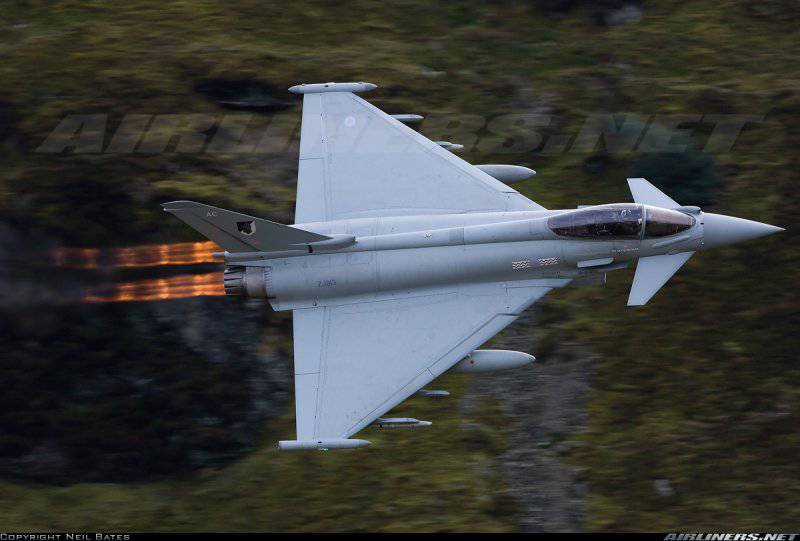
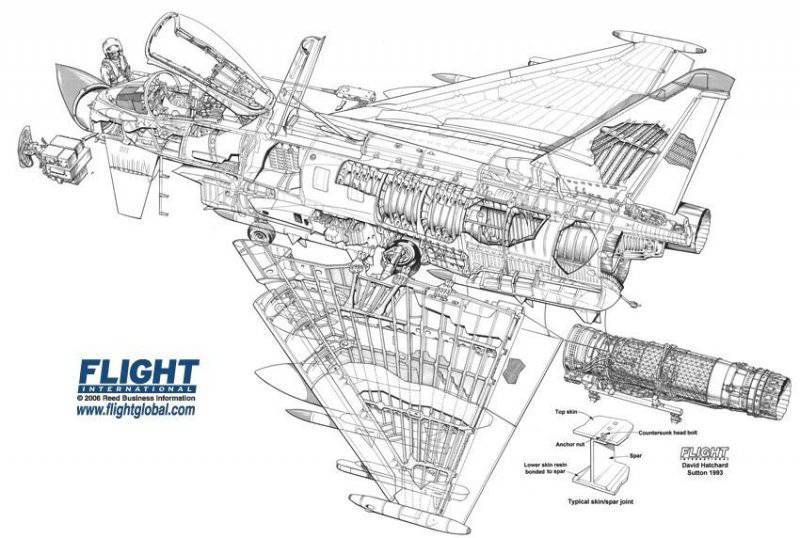
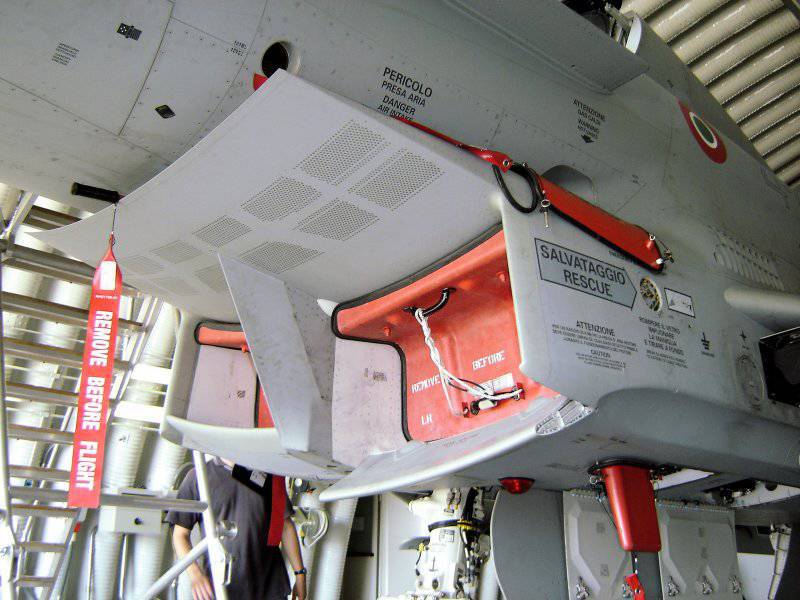
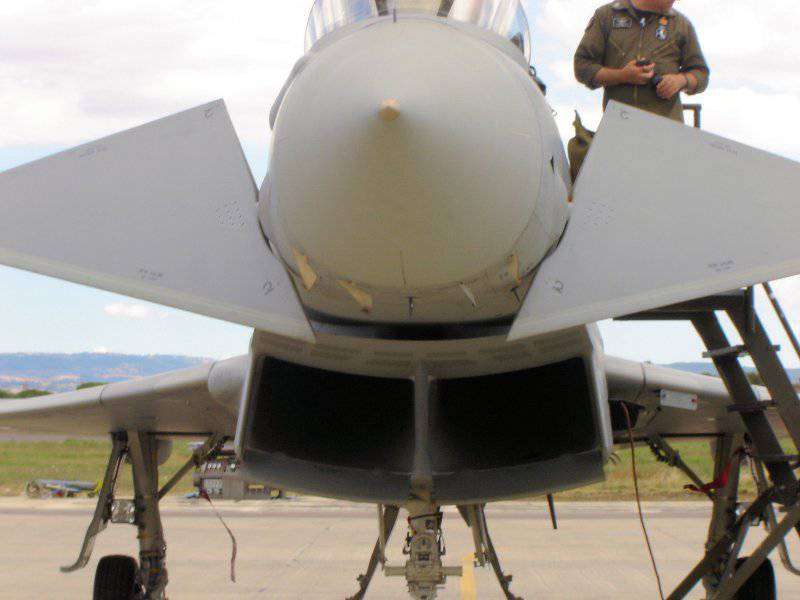
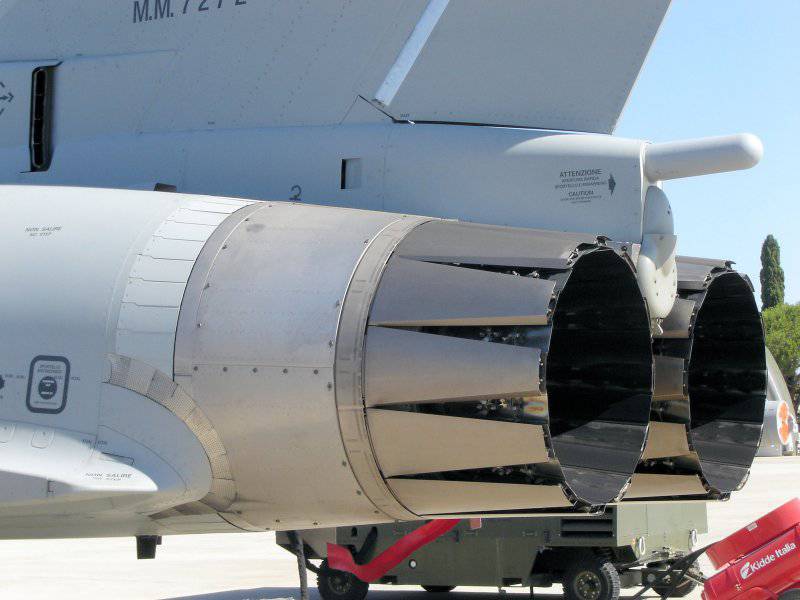
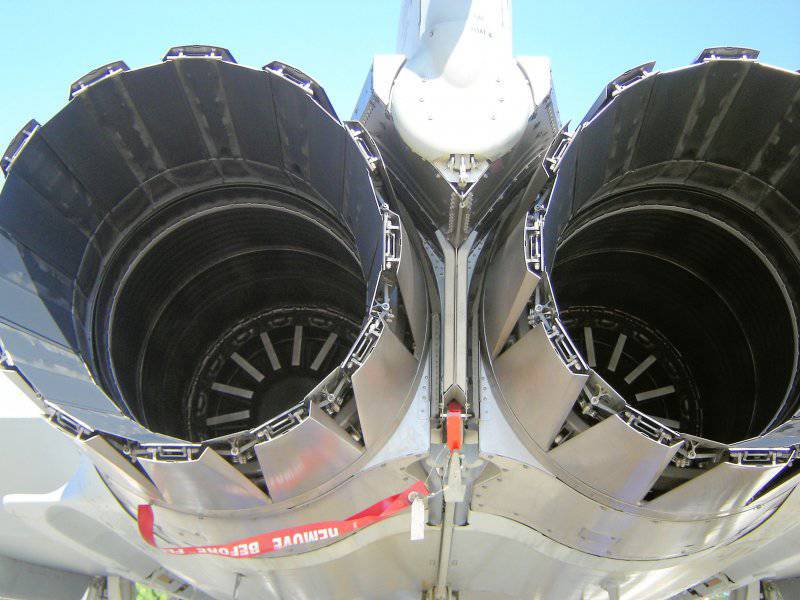
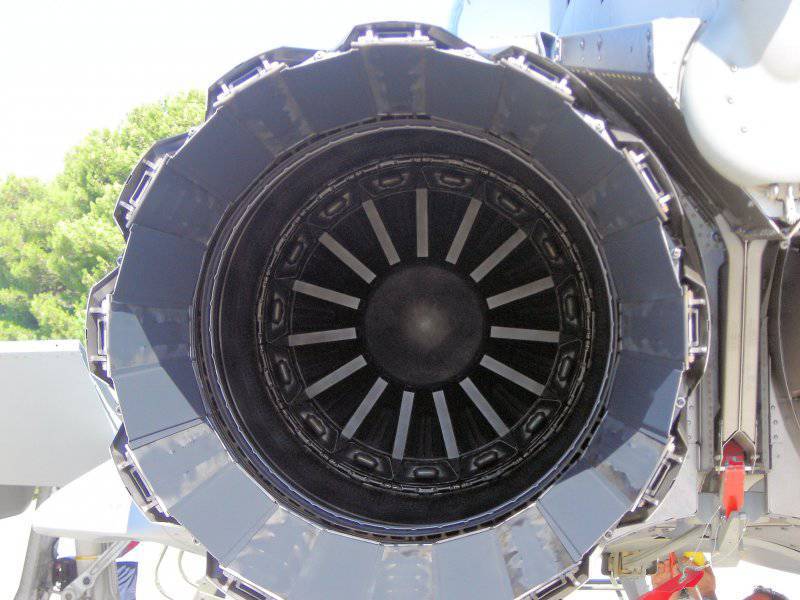
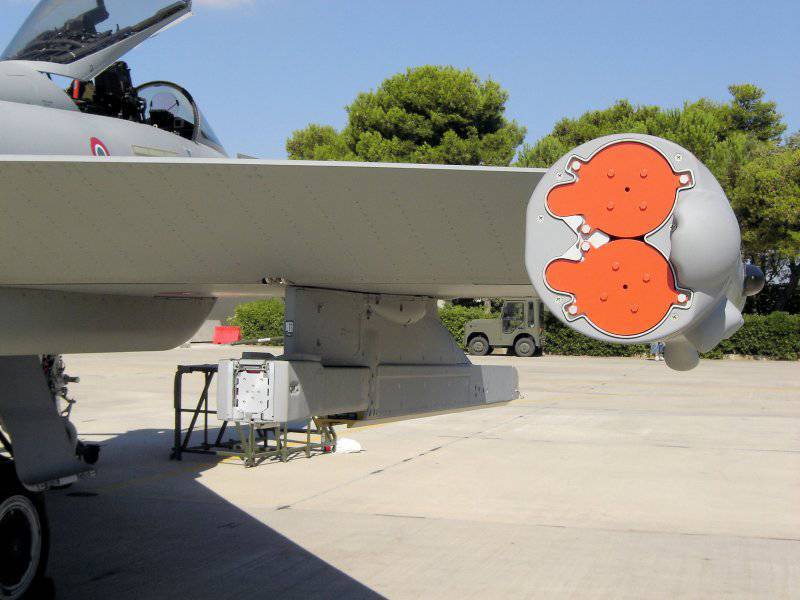
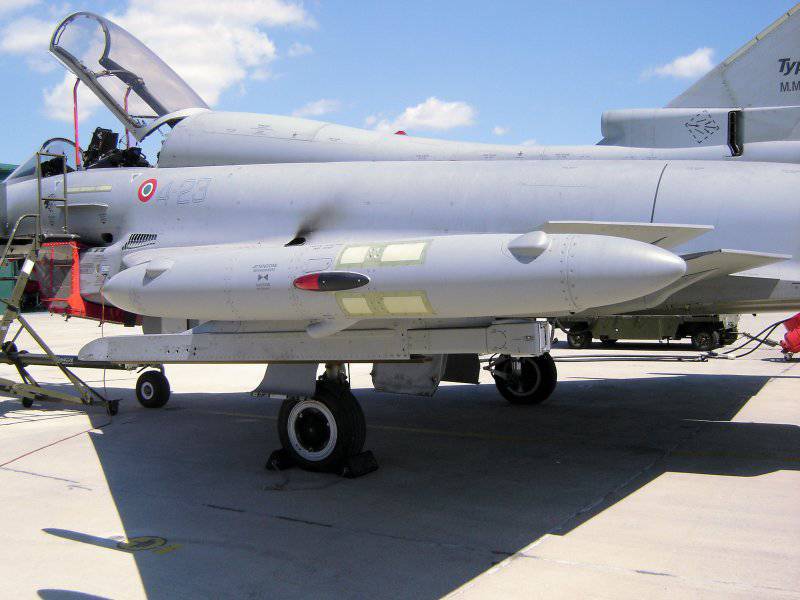
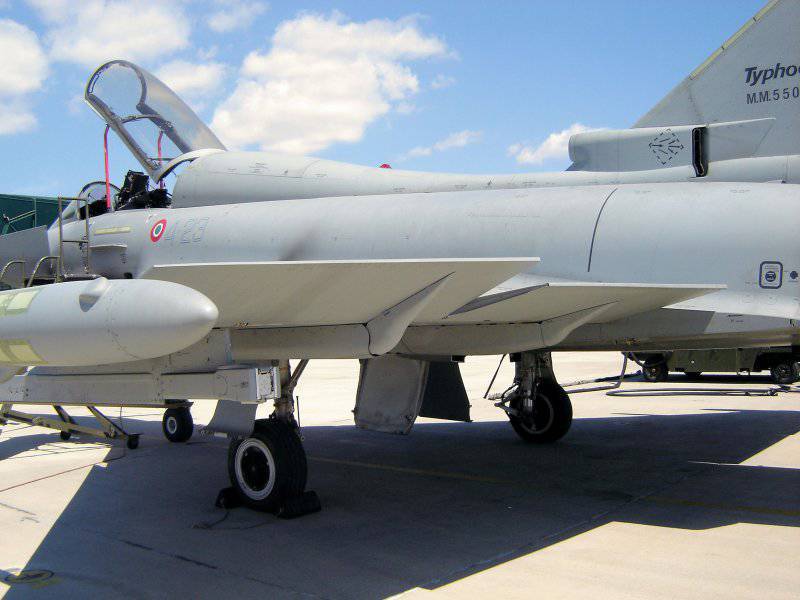
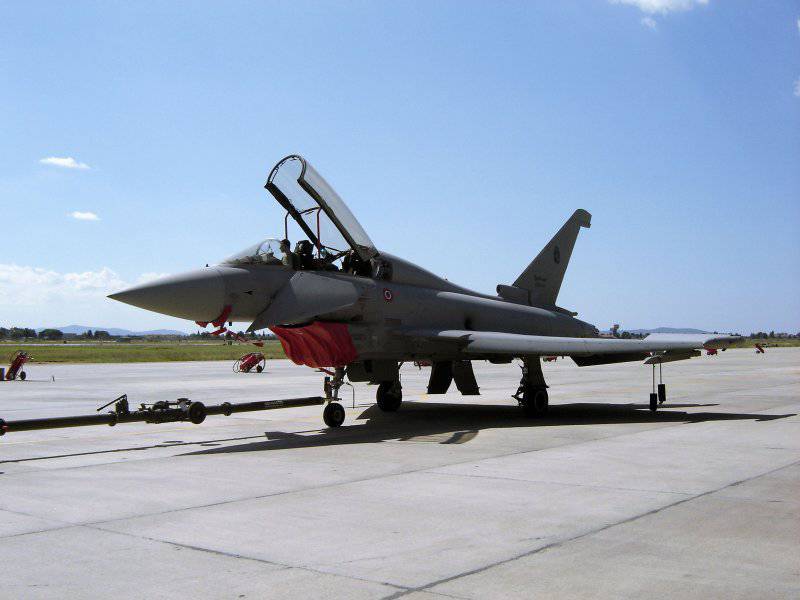
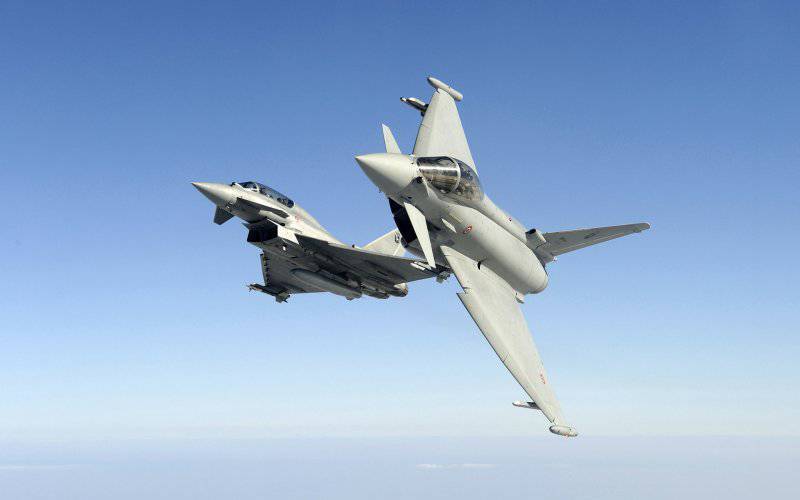
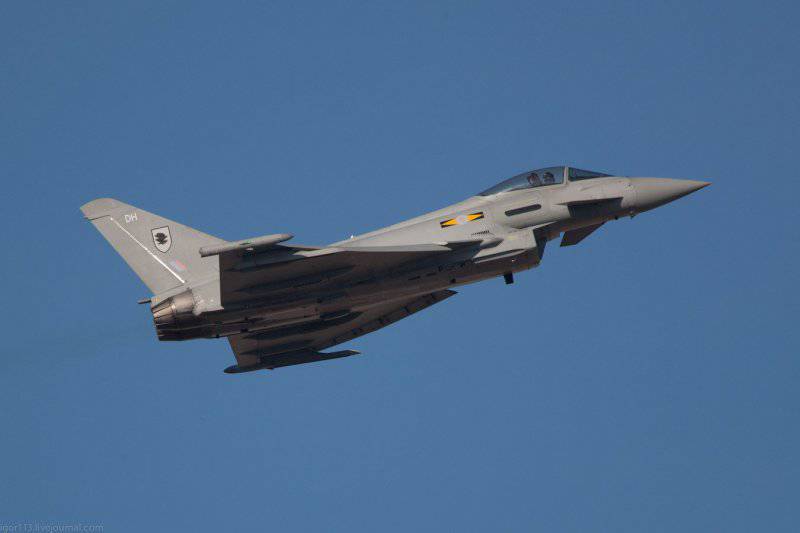
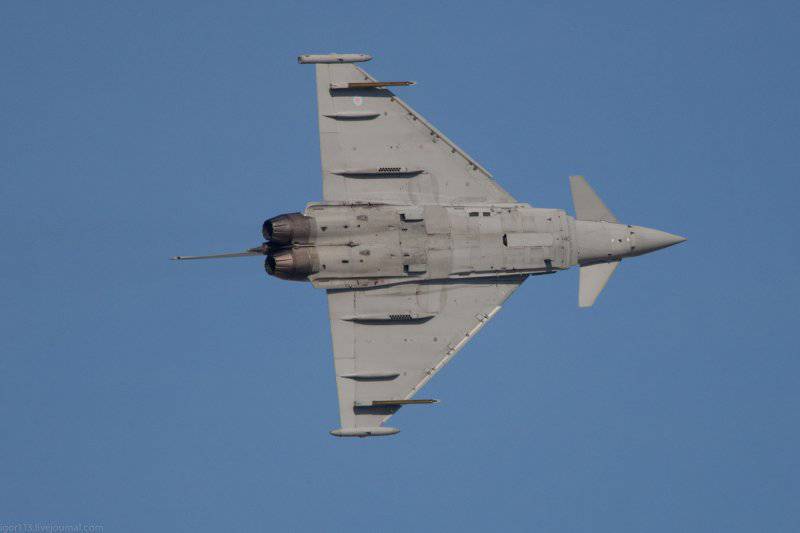
Information